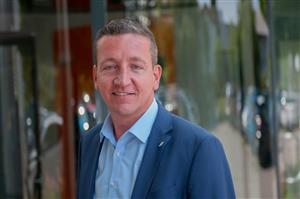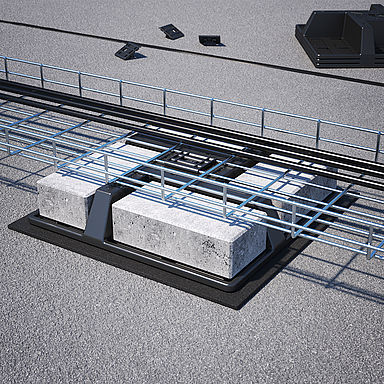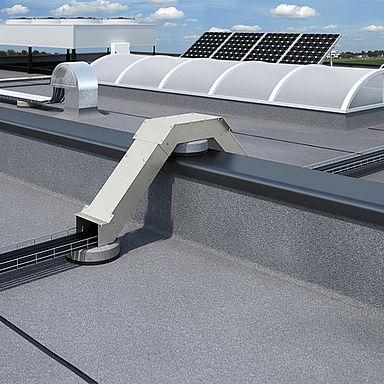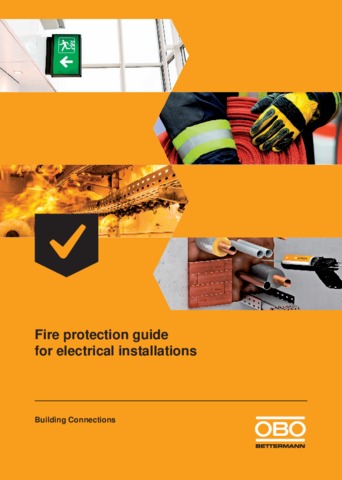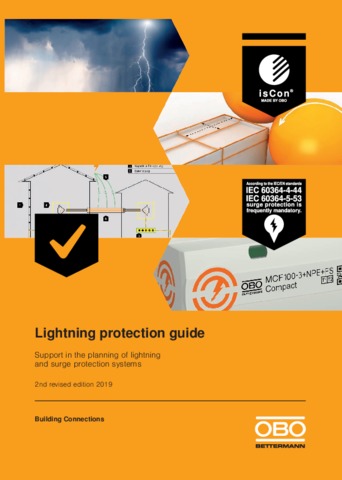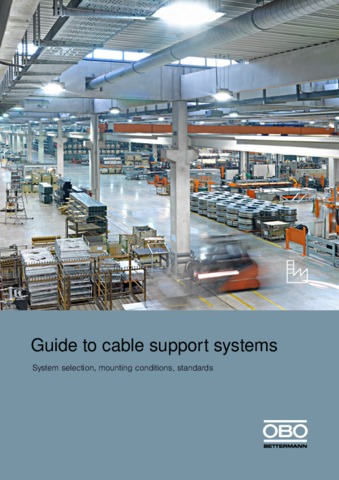In our modern world, there are ever-larger volumes of data and ever-more digital content, which has to be saved, processed and sent. This is made possible by computer centres. They are not only a key component of digitalisation, but also form the core of any company, bank, hospital and office. A large amount of sensitive content is saved here. Absolute functional safety and reliability are top priority here. OBO solutions ensure a high level of security in operation and efficiency in the set-up of the technical infrastructure. The benefit: Through its complete solution, OBO offers everything from a single source – from lightning and surge protection to cable routing and fire protection.
Your advantages at a glance:
- Everything from a single source: With our complete solution, the individual system components interlink perfectly
- Service@OBO: We can support your project with tailor-made support – from the initial planning through to finished mounting
- Long-term experience and competence from numerous projects: Profit from our expert knowledge
- Knowledgeable installation and planning aids for safe electrical installations in data centres
Quickstart
Areas of the data centres
Data centres differ with regard to their structural features and infrastructural connections, meaning that it is possible to distinguish between small, medium-sized and large data centres:
Product areas
Increased efficiency through networked systems: With regard to the safety of your data centre, profit from the synergy effects of the ideally matched OBO system components. Our system solution not only guarantees reliable cable routing, but ensures safe, protected operation of any data centre through solutions for lightning and surge protection, fire protection, and earthing and equipotential bonding.
Downloads
FAQ
- How can the orderly routing of cables be guaranteed in computer centres?
Countless measures contribute to the correct routing of cables in data centres. These include:
- Separating different levels of voltage from one another, for example through the use of a separating retainer or through the spatial separation of two cable trays
- Guaranteeing electromagnetic compatibility, for example through the use of closed cable tray systems with matching covers
- Fixing cables correctly, for example through the use of suitable clamp clips
- Maintaining the bend radii of the cables used, for example through the use of matching fittings, such as the 90° bends
- Guaranteeing the mechanical protection of cables, for example through the lamination of cut edges using an edge protection strip, or using cable protection rings, if pre-punched openings are used
- Applying additional earthing and fire protection measures, if they are required
- Which cable support system is ideally suited for use in a computer centre?
Depending on the purpose, both cable trays and mesh cable trays can be used in data centres. Cable ladders can also be installed here. Cable trays, particularly those with a closed design, can be used, for example, if sources of electromagnetic faults need to be reduced. Their open design means that mesh cable trays and cable ladders are ideal whenever cables have to be threaded in and out frequently.
- Should server racks be supplied from the floor or from the ceiling?
The wide-ranging use options are the hallmark of OBO cable support systems. For this reason, both the floor and ceiling variants can be implemented with all the current OBO support structures. In cases in which access to the server racks can only be guaranteed from the ceiling, a pendulum suspension using threaded rods and profile rails could be the right method to use. If the data centre has a raised floor structure, then the server racks can alternatively be supplied via the floor itself. Here, both construction profiles and also all kinds of cable support systems can be used. The necessary fastening material is also a component part of OBO’s standard delivery programme, irrespective of the place of use.
- Is it possible to construct a cable support system on multiple levels, as well as symmetrically or asymmetrically?
Yes, these structures can also be installed with the right OBO components. However, it should be ensured that the systems are designed to have a sufficiently high load capacity. This should be observed with asymmetrical support structures, in particular. Here, it is wise to contact OBO Customer Service in advance, to benefit from technical expertise in the static effects of the selected systems. A version of the cable support systems on multiple levels, e.g. on top of or below each other, is wise primarily when a series of multiple server racks is to be supplied. In this way, it is possible to exploit the full potential of the whole system.
- Is lightning and surge protection required for data centres?
Data centres around the world require a lightning protection system of lightning protection Class 1. The following applies to surge protection: In accordance with the IEC/EN and VDE standards, T1+2 surge protection devices of the highest requirement level (Iimp = 100 kA) are required at the supply points of the building. In addition, T2 surge protection is necessary in each subdistributor (distance greater than 10 m). Our tip: Please also check additional feed lines into the building (e.g. CCTV, exterior lighting, etc.). Surge protection measures are also required here.
- For lightning protection, what should be taken into account with regard to heat exchangers on the roof?
All the feed lines and frames of the heat exchangers, as well as the heat exchanger itself, must be within the protection area of the lightning protection system. Important: The separation distance to the lightning protection must always be maintained, as otherwise arcing from the lightning protection to the electrical system is possible. The OBO isCon® system permits a safe, insulated lightning protection system.
- Is an earthing system important for data centres?
Yes, this is how the use of a foundation earth electrode with 5 x 5 m grid width (with reinforcement fixed every 2 m) ensures low-impendence functional equipotential bonding. This means that high-frequency interference (EMC) through switching actions or surge voltages can be equalised.
- Are additional earthing measures for the foundation earth electrode necessary?
If the concrete is insulated (white/black trough), a mesh earth electrode made of V4A (10 x 10 m) is also necessary in the earth.
Contact
Your direct contact at OBO on the subject of data centres
